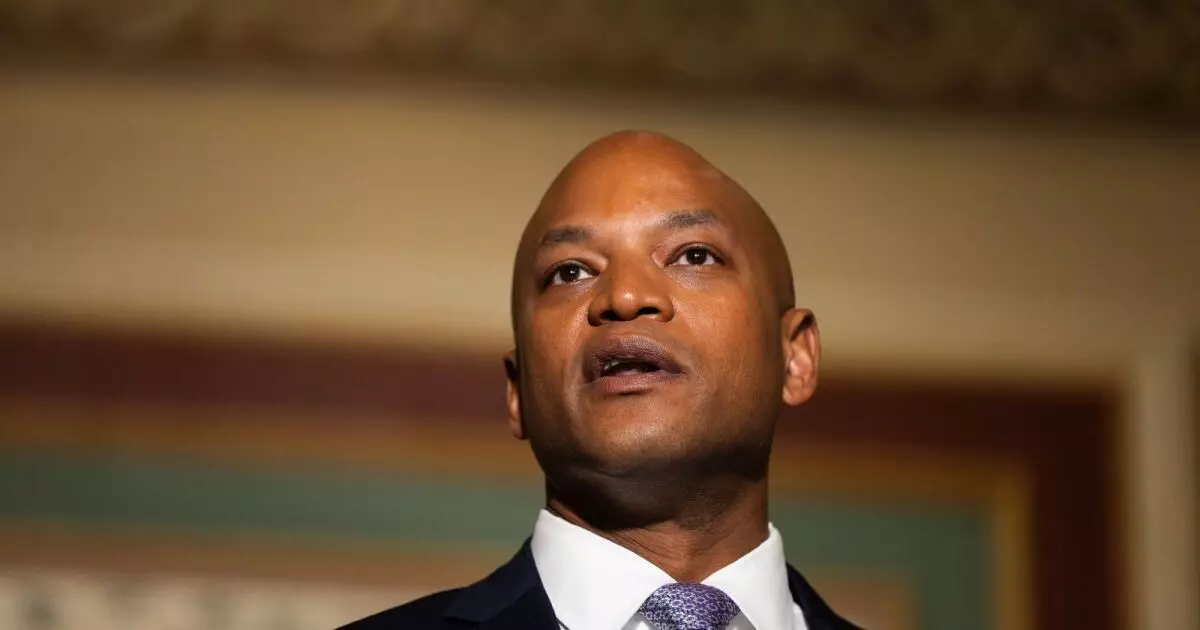The state of Maryland, renowned for its AAA credit rating, is presently grappling with a daunting budget deficit amounting to $3 billion. This economic quandary is attributed to a confluence of factors, including stagnated growth, escalating Medicaid expenditures, and a withdrawal of pandemic relief resources. As the government stands at a critical juncture, Governor Wes Moore’s administration is sparking tension and debate by resisting calls for tax hikes, escalating the complexity of the budgetary landscape.
Governor Moore expressed his discontent concerning the fiscal policies he inherited, likening the situation to a structural deficit exacerbated by unsustainable spending practices. His insistence on avoiding fiscal reforms that burden working-class Marylanders underscores a broader dilemma: how to manage escalating state expenditures amid stagnant revenue growth. The newly convened General Assembly faces a $27.2 billion general fund balance at the onset of deliberations, setting the stage for a contentious budgetary battle.
According to Governor Moore, the primary focus will be on devising a solution that can cut $2 billion from the budget shortfall without increasing taxes. This proposal reflects an inherent struggle faced by many states: balancing the need to maintain necessary public services while adhering to principles of fiscal conservatism. The pressures of fixed income streams and skyrocketing costs create a precarious scenario for state officials as they navigate the intersection of governance and economic accountability.
Responses from Maryland’s Republicans illustrate the complexities of bipartisan cooperation amid fiscal crises. Senate Minority Leader Steve Hershey’s adamant refusal to endorse any form of tax increases signifies a party-line division that complicates the budget formulation process. This attitude may hinder viable solutions that could alleviate the financial strain without disproportionately affecting certain demographics.
Among the clearest casualties of this budgetary standoff is the Blueprint for Maryland’s Future program, which underpins state education funding. The prospect of cutting significantly from educational initiatives draws sharp rebuke from teachers’ unions and advocates for educational equity. The educational landscape finds itself hanging in the balance, illustrating the intricate web of priorities that must be reconciled amid fiscal fiscal constraints.
In an era where environmental sustainability has been entrenched as a policy priority, Maryland’s budgetary constraints threaten to derail green energy programs, particularly those emerging from the Inflation Reduction Act. The potential repeal of such initiatives not only jeopardizes local job markets but also undermines Maryland’s efforts to contribute to a national movement towards sustainable practices. This crossroad highlights the challenging choices government officials face when confronting budget deficits.
As the specter of budget cuts looms large, the implications extend far beyond Maryland’s borders. The state’s fiscal challenges may portend broader national trends as federal funding allocations shift and economic forecasts become less predictable. States across the nation, including Maryland, may find themselves scrambling to adapt to a changing financial reality.
Recent analyses from credit agencies such as Moody’s illustrate dire implications for Maryland’s economic standing. The negative outlook accompanying the bond ratings signifies a precarious financial situation ahead. This outlook isn’t merely a reflection of immediate troubles, but rather a broader warning about the state’s long-term financial health and its capacity to sustain necessary public services.
The assessment by S&P Global Ratings reinforces the notion of uncertain economic waters lying ahead for states. As Maryland navigates these treacherous currents, the state government must prioritize effective fiscal governance to safeguard against further declines in credit ratings, which can have lasting repercussions for residents, businesses, and the broader economy.
Maryland’s current fiscal crisis serves as a poignant reminder of the complexities inherent in state governance and financial management. With ongoing challenges to balance budgetary constraints against public service needs, stakeholders must cultivate collaboration and innovative problem-solving. The journey ahead will require thoughtful deliberation, as well as an unwavering commitment to upholding the needs of all Marylanders in the face of an evolving economic landscape. Balancing the scales of expenditure and revenue, while navigating political pressures, will ultimately determine the state’s financial future.

